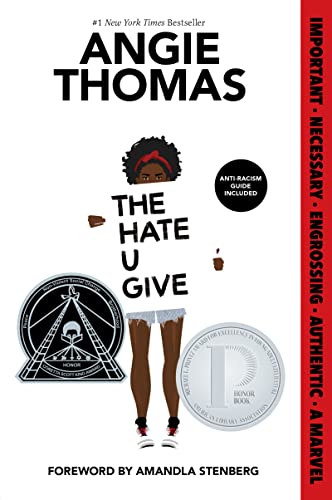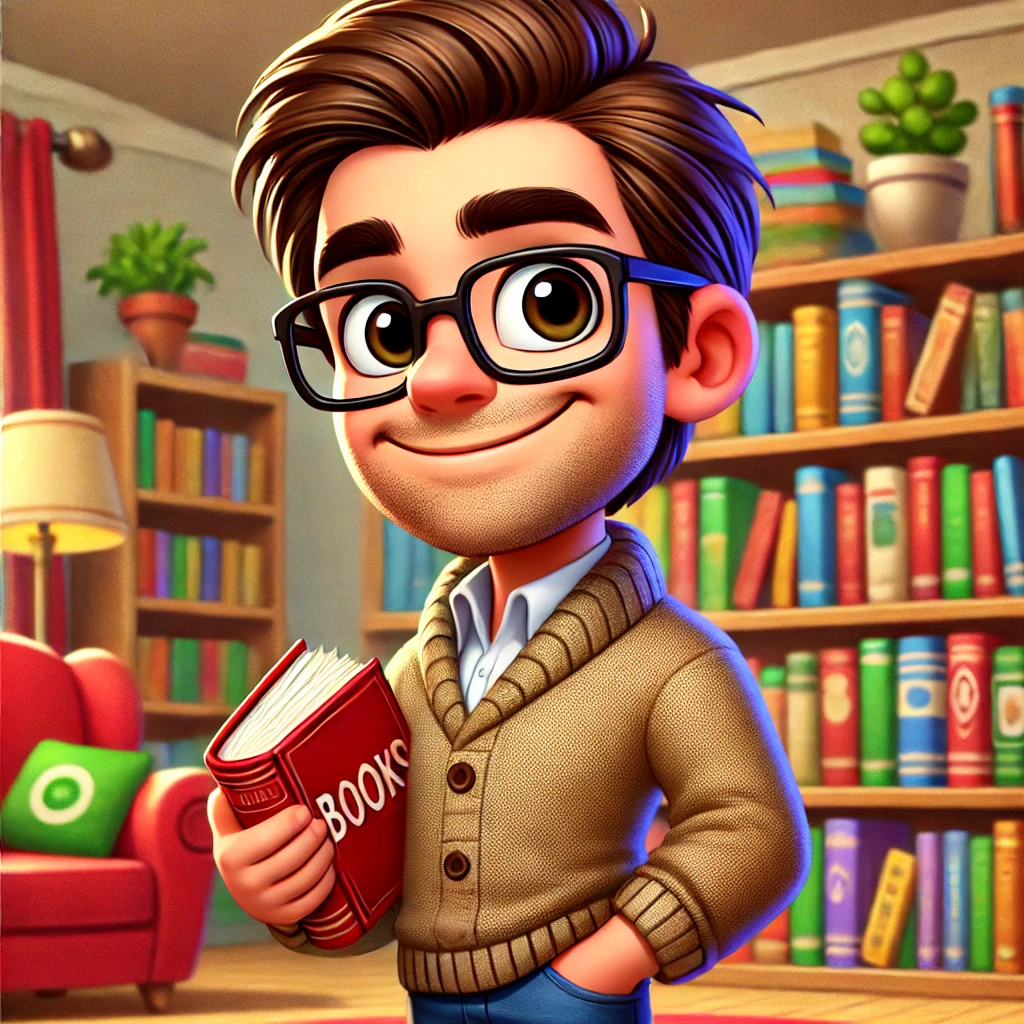Alright, folks, buckle up because I’m here to review a book that everyone and their grandma has probably heard about by now. This is not your average high school reading assignment—nope, it’s way more interesting, with less snoring involved. I picked up The Hate U Give because my friends kept talking about it at our last game night (yes, we talk about books between epic losses at Monopoly), and now I see why. This book tackles tough stuff like race and family in a way that made me laugh, cry, and even look a little smarter at dinner parties. Stick around, because in this review, I’m going to tell you what rocked, what flopped, and whether you should spend your precious snack money on it!
The Hate U Give by Angie Thomas: What You Need to Know
In a nutshell
If you want a book that grabs you by the feelings and won’t let go, Angie Thomas has you covered. The Hate U Give is a young adult novel, but don’t let that “young” part fool you. I’m old enough to have used a rotary phone and I still got hooked.
The story follows Starr Carter, a teenager stuck between two worlds—the poor neighborhood where she lives and the fancy prep school she goes to. When Starr witnesses a police shooting, the whole block is torn open. The book runs hard at big themes like racial injustice, police brutality, and finding your voice when your throat feels tight as a drum.
This isn’t just a lecture, though. It’s got family, friendship, a bit of romance, and plenty of real-life humor. If you like books that make you think but also let you laugh (and maybe get a bit sweaty under the eyes), this one’s for you. Angie Thomas brings the fireworks, but also the feels.
Exploring Racial Injustice and Police Brutality in “The Hate U Give”
Let’s get real for a minute—I remember reading “The Hate U Give” on a rainy Tuesday between cups of way-too-strong coffee. The book didn’t just tap me on the shoulder, it full-on whacked me upside the head with its take on racial injustice and police brutality. Angie Thomas doesn’t beat around the bush. She throws you into Starr Carter’s world, where a simple drive home turns into a nightmare after a police officer shoots her friend, Khalil. Honestly, I stopped chewing my sandwich for like ten minutes.
The book nails how racial injustice isn’t just in big, newsworthy moments, but also in small, painful ways that build up. Starr sees double standards at her rich, mostly white school and her mostly Black neighborhood. I related to the awkward moments—like when you want to call out something unfair but feel scared or outnumbered. The book lays bare how hard it is to speak up when everyone’s telling you to stay silent. It’s not preachy, just honest. That’s why it hits so hard.
But here’s the thing: some parts feel a little like a crash course in racial issues for folks just tuning in. That’s not all bad—my friend Brad learned more from this book than from any high school class. But if you’ve read lots of books about these themes, it might feel a bit basic at times. Still, there’s power in how Thomas keeps it clear and real.
I’ll say this—if you’re looking for a book that makes you think (and maybe smash your sandwich too), this one’s for you. Next, I’ll gab about my favorite thing: how Starr’s family somehow holds it together in the middle of chaos and drama.
Growth, Family, and the ‘The Hate U Give’ Heartbeat
When I think about character growth, The Hate U Give stands out like a toddler in a boardroom. Angie Thomas knows how to write real people. Starr Carter, the main character, changes more than my mood on a Monday morning. She starts off shy, scared to speak up. But by the end, Starr’s louder than my neighbor’s car stereo—which is saying something.
Starr’s family? Now that’s a cast! I love her dad, Maverick. He reminds me of my uncle—tough but ready to give you a lecture and a hug, sometimes both. The scenes at their kitchen table made me hungry and emotional at the same time. Even Starr’s little brother, Sekani, gets some sweet moments. Nobody in this book feels fake or forced. Each Carter family member deals with pain and love in their own way. Sometimes they argue, sometimes they laugh, but they always stick together. I once had a family barbecue that ended in both tears and burnt hot dogs, so I get it. If you have ever argued over the TV remote, you’ll relate to these folks.
It’s not just the Carter clan getting attention. Starr’s friends, both at her fancy school and in her home neighborhood, feel fleshed out. Some friendships get tested, others fall apart. The book makes you care about them, even when they make dumb decisions. (We’ve all been there!)
If you thought the characters felt real, just wait until you hear about the dialogue and setting. Spoiler: it’s as sharp as a tack in new jeans.
Real Talk: True-to-Life Dialogue and Setting in ‘The Hate U Give’
Look, I’ve read my fair share of books that try way too hard to sound like a teen, and end up with characters dropping slang like my dad at a family barbecue—cringe city. But The Hate U Give nails the way people actually talk. Starr, her friends, and her family sound real, not like characters rehearsing for a school play. The dialogue pops with life. Sometimes it’s funny, sometimes it’s sharp, and sometimes it’s so honest it makes you want to put the book down just to think for a minute. I remember reading a part where Starr and her friend argue over pop culture, and it felt exactly like me and my buddy arguing if pineapple belongs on pizza. (Spoiler: It doesn’t. Fite me.)
The setting also deserves some high-fives. Thomas paints Garden Heights, Starr’s neighborhood, as a place full of life, hopes, struggles, and yes, a corner store with chips for days. I could almost smell the fries. Thomas doesn’t turn the neighborhood into a scary backdrop, or a perfect one—she shows it as a real place, with real people. Even when Starr visits her fancy prep school, it feels like a jolt, not a fake world swap. She captures how it feels to be stuck between two worlds, and for anyone who’s ever felt out of place somewhere (which is all of us!), that hits home.
So if you want a story that sounds legit, not like a robot read the internet, this book’s got your back. Speaking of having your back, next I’ll talk about how The Hate U Give packs a punch with its impact on readers and social relevance—get ready for some feels!
Why ‘The Hate U Give’ Matters: Impact on Readers and Society
Let me tell you, reading The Hate U Give hit me harder than the time I ate a whole plate of super spicy wings and tried to act tough in front of my friends. This book packs a punch—and not just in your feelings. Angie Thomas doesn’t just write a story, she starts conversations. After I finished it, my group chat wouldn’t shut up about real-world problems and what we could do better. I even tried suggesting we start a book club. My friends said, “Steve, let’s start with finishing this book first.” Fair point.
The social relevance of The Hate U Give is huge. It adds fuel to the fire about big topics—like speaking up, allyship, and using your voice (even if it shakes, like mine does when I’m out of snacks at a party). The book makes people think and, honestly, that’s a big deal these days. It’s not all doom and gloom though. There’s hope, there’s humor, and there’s a reminder that change starts with regular folks talking and caring. This book has even landed on school reading lists, which is saying something. When was the last time anyone was excited about a mandatory book? (Sorry, math textbooks. It’s not you, it’s us.)
If you want a book that will stick with you longer than that embarrassing thing you did at school once, I say go for it! I’d recommend The Hate U Give for anyone who wants a story that matters—and one that might just change how you look at the world.
Conclusion
Well folks, that’s a wrap on my review of The Hate U Give. I laughed, I cried (more than I care to admit), and I even wanted to call my mom after reading some of the family scenes. This book is real, powerful, and not afraid to stare tough topics right in the face. Angie Thomas manages to balance hard-hitting social issues with humor, heart, and a bit of teen sass. Sure, sometimes it gets a bit preachy, and the pacing drags like my feet after a long day, but the characters and message make it more than worth your time. If you’re looking for a story that actually matters (and maybe makes you think a bit), you can’t go wrong here. Thanks for reading my review—now go read the book!


